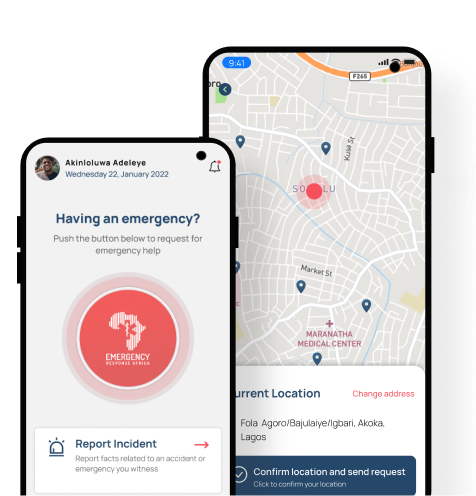Do you know the basic first aid requirements at a construction site? Do you know what to do in an emergency or accident on a construction site? Well, we are here for you. Construction sites are known to be high-risk environments where accidents can happen due to the nature of the work. Workers often deal with heavy machinery, work at heights, and handle dangerous materials.
Because of this, having the right first aid measures in place is essential to ensure the safety and well-being of everyone on-site. In this guide, we’ll discuss the essential first aid requirements for construction sites, focusing on key aspects to keep in mind for a safer workplace.
What are the Basic First Aid Requirements at a Construction Site?
The basic first aid requirements that every construction site should have to ensure the safety of workers are as follows;
1. Adequate First Aid Kits
A fully stocked first aid kit is a must-have on any construction site. These kits should be tailored to the injuries most likely to happen in such environments. For example, workers may experience cuts, burns, or injuries from falls. A construction site first aid kit should include:
- Various sizes of bandages and dressings for cuts and wounds
- Sterile wipes or antiseptic sprays to clean wounds
- Plasters, gauze, and adhesive tape for minor injuries
- Scissors and tweezers to handle first aid supplies
- Eyewash for eye-related injuries caused by dust or chemicals
- Splints to stabilize broken bones until help arrives
- Pain relief medication for minor aches or injuries
The placement of these kits is also important. They should be easily accessible and located where accidents are more likely to happen, such as near high-traffic areas or where dangerous tasks are performed.
2. Trained First Aid Personnel
Having a first aid kit is only useful if there are trained people who know how to use it. Construction sites should have workers who are trained in first aid to respond quickly and effectively in case of an emergency. Basic first aid training includes skills like:
- CPR (Cardiopulmonary Resuscitation) to help someone whose heart has stopped
- Treating wounds and burns
- Managing fractures or dislocations
- Handling unconscious or choking individuals
For larger construction sites, there should be multiple trained first aiders, and they should always be present while work is ongoing. This ensures that no matter when or where an accident happens, someone will be able to help.
3. Clear Emergency Procedures
Every construction site must have clear and well-practiced emergency procedures. In the event of an accident, all workers should know what to do and where to go. This includes knowing:
- The location of first aid kits and trained first aiders
- How to contact emergency services if needed
- Evacuation routes in case of a fire or major accident
- Reporting protocols for workplace accidents
Having these procedures in place and regularly practicing them through drills can save valuable time during an emergency and ensure that everyone knows how to respond correctly.
4. Automated External Defibrillators (AEDs)
An AED is a portable device used to help someone who is experiencing sudden cardiac arrest. Construction workers, especially those with preexisting heart conditions, may be at risk of heart attacks due to the physical nature of their work. Having an AED on-site and ensuring workers know how to use it can be life-saving in these situations.
While AEDs are not required on every site, they are strongly recommended for larger construction sites or those where older workers are present. Like first aid kits, AEDs should be placed in easily accessible locations, and workers should receive training on how to use them.
5. Regular First Aid Kit Inspections
It is not enough to simply provide first aid kits and equipment; these supplies must be regularly inspected to ensure that they are fully stocked and in good condition. Construction sites should schedule regular inspections of their first aid kits to check that:
- All necessary items are present
- Expired items, such as medication or sterile supplies, are replaced
- Any used items are restocked immediately
These regular inspections help ensure that first aid kits are ready to use in an emergency and that no time is wasted searching for missing or outdated supplies.
RELATED SERVICES

Common Types of Injuries on Construction Sites
Understanding the common types of injuries that happen on construction sites can help in preparing the right first aid supplies and training. Some common injuries include:
1. Cuts and Lacerations
Workers often deal with sharp tools and materials, which can lead to cuts and lacerations. First aid treatment includes cleaning the wound, applying antiseptic, and covering it with a bandage.
2. Burns
Burns can occur from contact with hot surfaces or chemicals. Workers should know how to treat burns immediately by cooling the affected area with water and covering it with a clean dressing.
3. Fractures
Falls from heights or being hit by heavy objects can cause fractures. First aid treatment includes immobilizing the affected area and seeking medical help as soon as possible.
4. Eye Injuries
Dust, debris, or chemicals can get into a worker’s eyes, leading to irritation or injury. Eye wash stations or sterile eye drops are important to have on hand to quickly flush out any harmful substances.
5. Spinal Injuries
Spinal injuries can result from falls or other serious accidents. Workers should be trained to recognize the signs of a spinal injury and avoid moving the person while waiting for emergency services to arrive
RELATED SERVICES
Strategies for Reinforcing First Aid Awareness
Simply having first aid kits and trained personnel on-site is not enough; workers need to be continuously reminded of the importance of first aid. Here are a few strategies to help reinforce first-aid awareness on construction sites:
1. Toolbox Talks
Regular toolbox talks are short meetings held on-site to discuss safety topics. These talks can be used to review first aid procedures, review recent incidents, and provide practical demonstrations of handling certain injuries. Keeping first aid at the forefront of workers’ minds helps them stay prepared for emergencies.
2. Visible Signage
Signs that point out the locations of first aid kits, AEDs, and trained first aiders should be placed throughout the construction site. These visual reminders make it easy for workers to find help quickly in an emergency.
3. Daily Safety Briefings
Incorporating first aid reminders into daily safety briefings helps reinforce its importance. Brief updates on first aid protocols, such as reminding workers of nearby first aid stations or AEDs, keep the information fresh in everyone’s minds.
4. First Aid Drills
Just like fire drills, first aid drills help workers practice what to do in an emergency. By running through simulated accidents, workers become more familiar with first aid procedures and feel more confident in their ability to respond during real-life situations.
Why Is First Aid Important in Construction Sites?
First aid is the immediate help given to someone who is injured or ill before professional medical help arrives. On a construction site, accidents can happen quickly and unexpectedly, so having proper first aid measures can make a huge difference. It can help:
- Save Lives: Quick action can prevent minor injuries from becoming serious and can even save lives in severe cases.
- Reduce Injury Severity: Immediate care can reduce the severity of an injury, leading to faster recovery.
- Maintain Productivity: Proper first aid ensures that injuries are managed well, reducing downtime and maintaining project schedules.
Having basic first aid requirements in place shows that a construction site cares about the safety and health of its workers. It also complies with legal regulations, which is essential for avoiding penalties.
RELATED READING
Conclusion
First aid is an essential part of ensuring safety on construction sites. Every construction site needs to have the right supplies, training workers, and practice emergency procedures to be better prepared for accidents.
It doesn’t matter if it’s a small cut or a serious injury, but being prepared with first aid can save lives and reduce the severity of injuries.
Regular training, inspections, and reminders help keep first aid readiness a priority, ensuring a safer environment for everyone working on-site.





